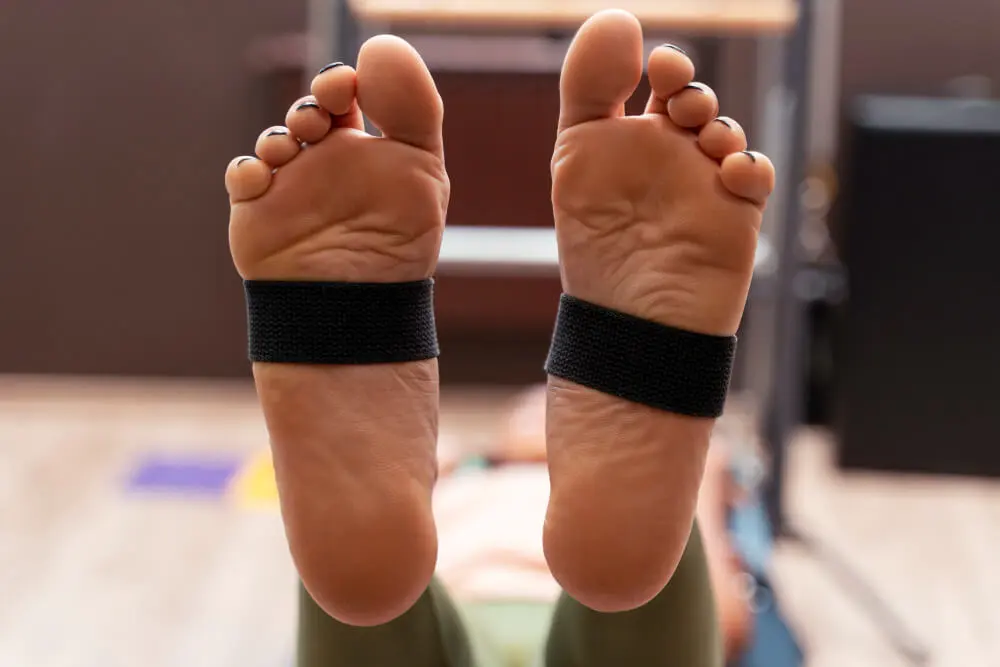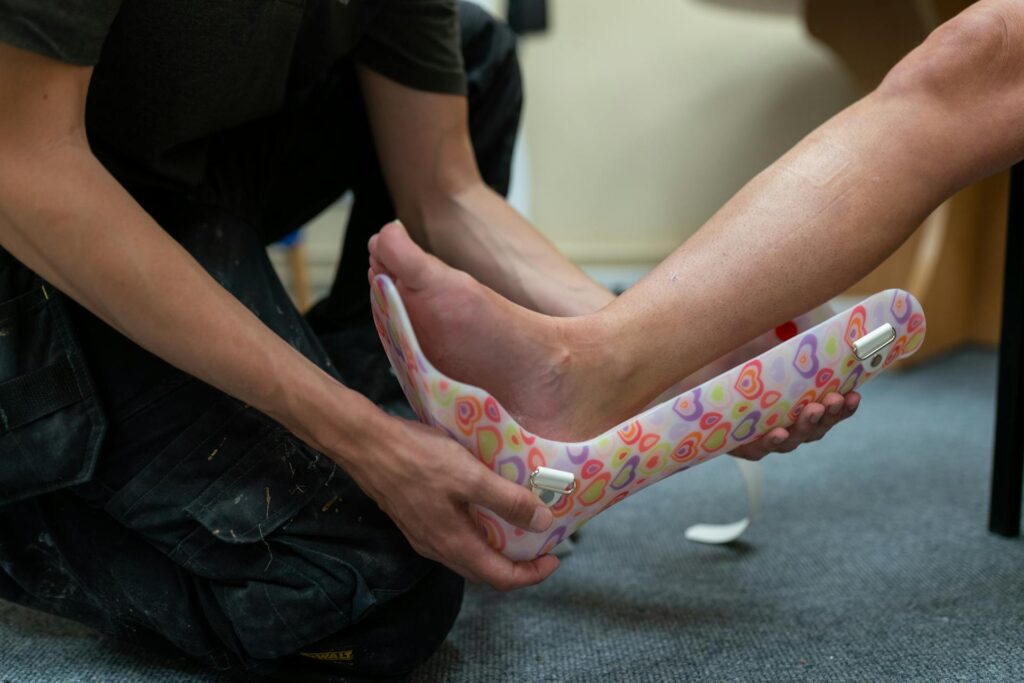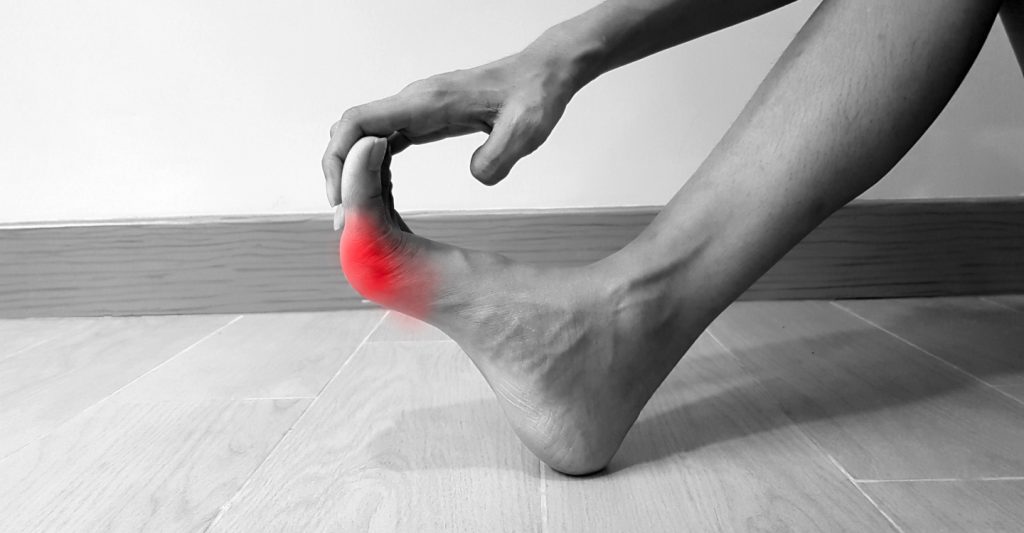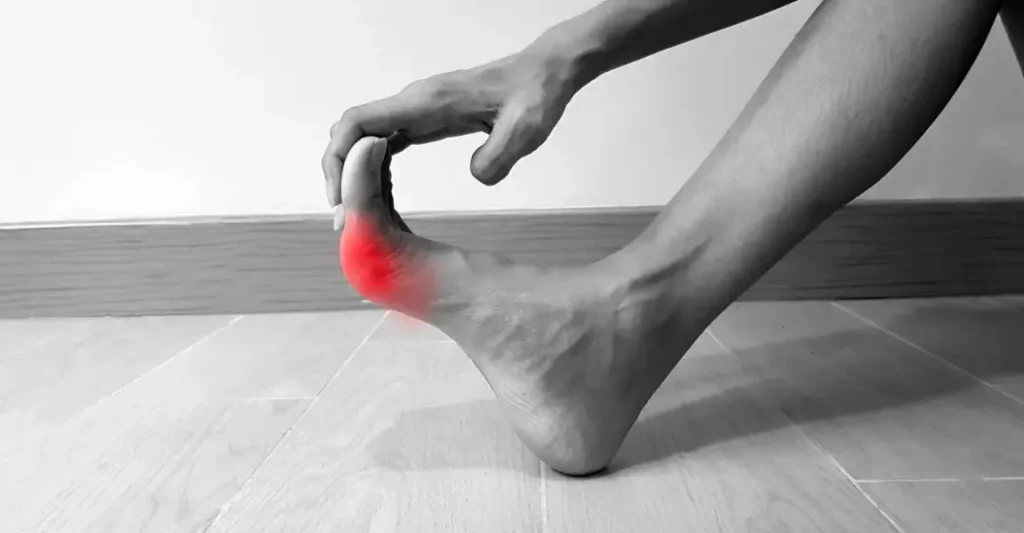The plantar fat pad helps the foot absorb shock. However, as we age it begins to wear out. Like mechanical parts, the human heel fat pad deteriorates with age, as a result of constant use, often leading to pain, loss of function, and inability to perform certain tasks.
What Causes Plantar Fat Pad Atrophy?
The leading causes of plantar fat pad atrophy include:
- Age
- Obesity
- Abnormal foot mechanics
- Poor surgery outcomes
- Use of high-heel shoes
- Steroid injections
Besides the causes listed above, running is another major cause of plantar fat pad atrophy. Marathoners and runners with high arches are especially prone to fat pad atrophy. Plantar fasciitis can also be associated with heel fat pad atrophy, which can worsen the condition and cause severe pain in some patients.
What Does Fat Pad Atrophy Feel Like?
Atrophy or displacement of the fat pad can lead to chronic pain, which can result in some patients feeling like they are walking on bone or rough surfaces. In many patients, the pain can lead to restricted motion, emotional trauma, and extreme distress, resulting in decreased productivity and poor performance at work.
How Do You Diagnose Fat Pad Atrophy?
Plantar fat pad atrophy diagnosis methods include:
- Physical examination
- Medical history
- X-rays
- MRI
- Ultrasound
Physicians often rely on physical examination, medical history, or x-rays to diagnose the atrophy of the foot and similar conditions such as plantar fasciitis. However, in more severe cases, diagnostic tools such as MRI and ultrasound may be necessary to determine or rule out the presence of heel fat pad atrophy and other similar conditions in patients.
How Do You Treat Plantar Fat Pad Atrophy?
Plantar fat pad atrophy treatment methods include:
- Foot orthoses
- Wearing cushioned stockings
- Heel cups
- Dermal fillers
- Fat transfer, also known as lipofilling or fat grafting
- Surgery
The primary methods for treating heel fat pad atrophy include measures such as: wearing cushioned stockings, foot orthoses, and heel cups to help cushion the foot and minimize the impact of walking. These treatment methods can help reduce pressure on the foot by serving as shock absorbers or as fat pad replacement to relieve pain that results from the atrophy of the fat pad.
Another important treatment option for fat pad atrophy is lipofilling also known as fat transfer or fat grafting. The procedure involves taking fat from areas where it is present in large amounts and injecting it into the patient’s foot. This is akin to dermal fillers, albeit with a better outcome for the patient.
Surgery is often recommended for more severe fat pad atrophy conditions. In cases where there are severe deformities or where other simpler treatment methods such as foot orthoses, dermal fillers, or fat grafting aren’t enough to reduce the pain caused by plantar fat pad atrophy, surgery is often opted for.
If you have any questions about plantar fat pad atrophy or similar conditions, contact us or leave a comment below.





